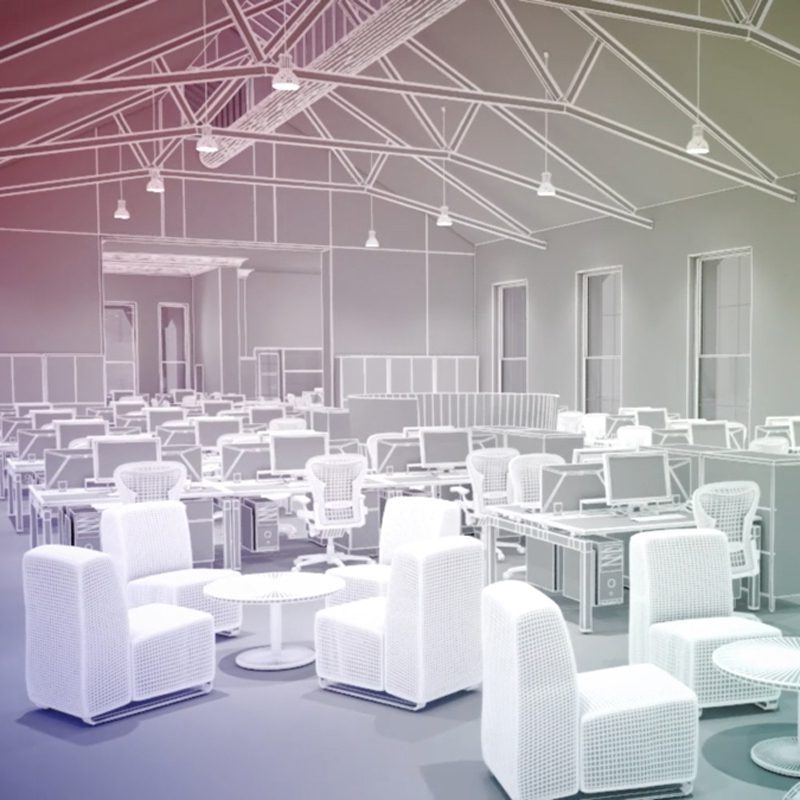Matthew Butchard, Research and Development Manager at SAS International, explores the company’s ongoing commitment to technolgical development, innovation and collaborative working
In association with![]()
*![]()
Driving change in metal ceilings
Metal ceilings have in the past 30 years become the preferred solution for a wide range of construction projects. They can provide unlimited design possibilities while fulfilling acoustic, thermal, fire and lighting demands. With the worldwide market for metal ceilings continuing to grow, the success of manufacturers such as SAS International is built on innovation, cutting-edge design, manufacturing prowess and the ability to realise an architect’s vision.
Metal ceiling tiles allow architects to utilise a material that provides durability, acoustic control and visual impact. New product development is driven by market demand, predicting future trends based on new technologies and changing workplace requirements. Several years ago, the sector started to see a significant increase in complex surface geometries, which was influenced by a desire for greater visual interest. This was enabled by advances in CAD software and construction methods – something that will continue to help shape future products and innovations.
Multi-faceted ceiling designs
As designers have moved towards increasingly varied and complex ceiling surfaces, SAS has created modular solutions, such as the Mesh and Polynode systems, to target this demand. The latter is adaptable and can be used to generate free-form surface geometry out of a single tile size and standard components. This is part of a drive to develop modular systems with standard components that can be arranged in multiple ways and facilitate the varied architectural concepts we now see on a regular basis – without designing complex bespoke products every time.
Continual improvement is a key factor as the company strives to optimise existing systems for manufacture and installation. The mesh product range, for example, continues to evolve from a highly intensive manual process into a repeatable, quality- controlled product suitable for high-volume manufacture. The cassette mesh range standardises the mesh panel across the system, which can then be adapted to each suspension method with specific profiles.
Technological advances
Investment in factories and machinery has allowed SAS to manufacture products more efficiently, as well as produce larger panels, custom finishes and special perforations. The company has also set up a dedicated Product Development Centre (PDC), which handles bespoke project requirements and rapidly produces prototype products.
Development work in the PDC can then be quickly scaled up into volume production across multiple SAS factories. 3D models and printing, as well as virtual on screen and VR visualisations enable the company to realise a concept faster than ever and deliver on the client’s vision.
The investment in both design software and the design team is crucial, particularly when asked to create complex, millimetre-accurate 3D forms. It’s now possible to create shapes that were unthinkable 20 to 30 years ago thanks to the power of CAD and 3D printing. This can all be achieved in a short period of time, with virtual mock-ups to scrutinise before committing to manufacture.
Collaborative design process
The company is also using technology to reduce the design time for standard products, making configurable models which are parametrically driven and can generate all the manufacturing detail and planning required to produce each component. Longer term, there is potential to expand on these configurable products utilising BIM to automatically drive them all the way through to delivery and lifetime management. Collaborative software will allow teams to work effectively together and co-ordinate on an international basis. Project teams are now more connected than they have ever been with the barrier of distance crumbling in the wake of technology.
The future looks good
The industry will continue to adopt new technology. 3D printing in construction for example is in its infancy but gathering pace. SAS is currently considering how to adapt and bring our expertise into this environment with the development of synergistic modular products. Virtual reality in its many forms, such as headsets, AR glasses and AR displays on screen, will all be working together in a collaborative built environment. The technology is already compelling enough to allow full building design and interaction, yet there is plenty of innovation to come. The digitisation of the construction industry is well under way and is why research and development aims to progress SAS products hand in hand with this advancement.
Contact Details
For more information please visit the SAS International website, email or call 0118 929 0900.
Click here to return to the AT30 homepage.













